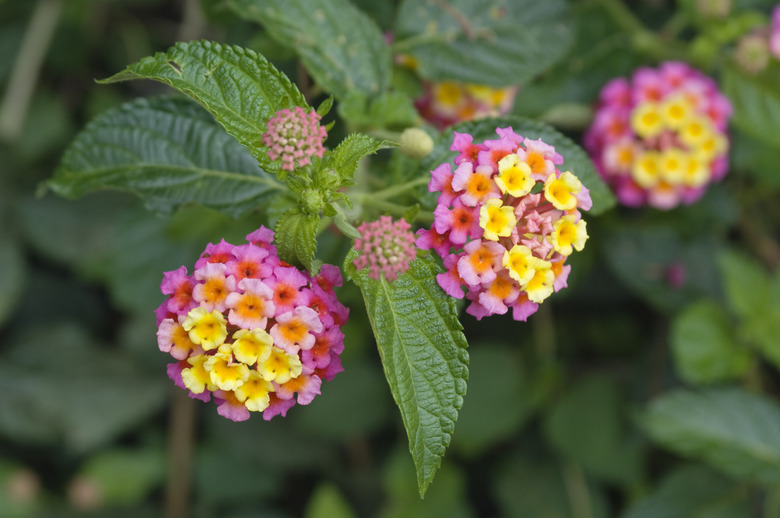Winter Care For Lantana Plants
We may receive a commission on purchases made from links.
Lantana (Lantana spp.) may remain evergreen and bloom year-round in frost-free or virtually frost-free climates such as U.S. Department of Agriculture plant hardiness zones 8 to 11. However, the plant will die back to the ground in USDA zone 7 and sometimes in USDA zone 8. If heavily mulched there, the most robust types — such as 'Miss Huff' (USDA zones 7 through 11) — should re-sprout from their root crowns in spring. Don't plant any lantana after late summer, though, if you want it to survive the winter in marginal zones.
Zones 7 through 11
Zones 7 through 11
In usually frost-free climates, lantana shouldn't require much winter care. If its leaves get nipped by frost, leave affected foliage in place over winter to shield the rest of the plant. Whether or not the lantana has been damaged, cut it back severely in spring to encourage fresh new growth.
Lantana growing in colder zones usually can endure light frosts, down to about 29 degrees Fahrenheit, with little damage except possibly a hint of purple in its leaves. At lower temperatures, however, its foliage will begin to die back. After that foliage is dead, leave it in place and surround and partially cover it with a non-compacting winter mulch, such as 3 to 6 inches of chopped dead leaves or 6 to 12 inches of straw. If you prefer a neater look, cut the dead stalks back to 1 inch high before applying winter mulch on top.
Dead lantana stems pruned in the autumn may collect water and rot the plant's root crown. If you want to be on the safe side, postpone such pruning until spring. In early spring, remove the mulch and watch for new growth to begin to sprout from the ground. Once you see it, cut away the old dead foliage, if you didn't do so the previous autumn.
Zones Lower Than 7
Zones Lower Than 7
Once night-time temperatures begin to fall below 50 degrees F, pot your lantana in a fast-draining and slightly acidic potting soil such as that designed for cacti. Shift it into the shade to prepare it for the dimmer light indoors. After the plant is well-established in the container and just before you move it indoors, mix 5 tablespoons of insecticidal soap concentrate into 1 gallon of water and thoroughly spray the plant.
Where you place the lantana will depend on whether you want it to remain dormant over winter or prefer to grow it as a houseplant. If you choose to keep it dormant, place it in a spot with a temperature between 50 and 60 degrees F and minimal sunlight. Refrain from fertilizing it and water it only about once a month or often enough to keep its roots from drying out completely. If you want to keep it growing, treat it like a houseplant with appropriate light and watering.
Considerations When Moving Plants Inside
Considerations When Moving Plants Inside
When deciding whether or not to bring your lantana indoors, keep in mind that all parts of the plant, including immature lantana berries and leaves, are poisonous to people and pets. Choose a safe location if you have kids or pets in the home and decide to bring the lantana indoors. The crushed foliage also emits an unpleasant odor somewhat similar to that of cat urine.
Woody plants such as lantana almost always drop some or all of their leaves when moved indoors. This is a reaction to their changed situation and doesn't necessarily mean they're dying. Should you suspect that your plant is suffering from frostbite instead, cut back its stems a little at a time to see if any retain some green at their centers. If they do, the plant is still alive.
Growing Lantana as a Houseplant
Growing Lantana as a Houseplant
You can also grow lantana as an indoor plant year-round or just for the winter. If you choose to grow the lantana as a houseplant, place it in a room where the temperature remains between 60 and 70 degrees F with slightly lower temperatures at night. Position the plant on a sunny windowsill — preferably a south-facing one. Water it whenever its soil is dry 2 inches beneath the surface, but don't fertilize it until spring.
